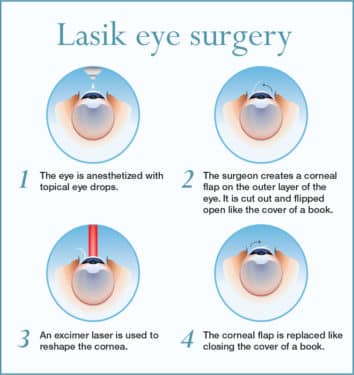As a cataract doctor, your day begins with a comprehensive eye exam, where you assess patients' vision and lens clarity. You know exactly how vital it is to determine cataracts precisely. As soon as detected, you get ready for surgical treatment, ensuring every detail is made up. Yet the challenge does not finish there. The genuine journey unravels in the operating room, where precision is crucial. What occurs next might define a patient's visual future.
The Diagnostic Refine: Identifying Cataracts
When it comes to identifying cataracts, quality is essential. You'll start with a thorough eye assessment, where you'll examine visual acuity and look for any type of indications of cloudiness in the lens.
Throughout this procedure, you'll utilize specific tools, such as a slit light, to get a comprehensive sight of the eye's structure. You'll additionally perform a dilated eye exam to evaluate the lens and retina better.
Collecting your client's medical history is important, as it aids determine danger elements like age, diabetes, or previous eye injuries.
After analyzing the outcomes, you'll determine the visibility and severity of cataracts. This meticulous approach ensures you supply the best referrals for therapy, setting the stage for the following steps in their treatment.
The Procedure: Precision in Action
After diagnosing cataracts and reviewing therapy options, you plan for the procedure, where accuracy is vital.
You enter the operating room, wearing clean and sterile handwear covers and a mask. The patient rests pleasantly under intense lights, ready for the improvement.
You start by administering regional anesthetic, ensuring they really feel no discomfort. With a stable hand, you make a tiny laceration in the cornea, making use of advanced strategies to eliminate the gloomy lens.
You meticulously put the artificial intraocular lens, straightening it completely for optimum vision. Throughout the procedure, you keep track of vitals and change as needed, maintaining concentrate on the job.
In simply a short time, you'll have restored your patient's sight, a gratifying outcome for both of you.
Post-Operative Treatment: Making Certain Optimal Recuperation
Once the surgical procedure is complete, your role shifts to making sure the patient's smooth healing.
You'll begin by supplying clear post-operative instructions, stressing the relevance of using the eye guard and taking prescribed drugs. Remind you could try this out to stay clear of massaging their eyes and engaging in exhausting tasks.
Schedule a follow-up appointment within a few days to check recovery and attend to any type of issues. Encourage clients to report any type of indicators of infection, such as boosted inflammation or discharge.
Furthermore, go over the value of using artificial splits to reduce dryness. Support their emotional wellness by guaranteeing them that aesthetic renovations may require time.
Conclusion
In a cataract surgeon's day, you witness the journey from diagnosis to recuperation. You see the precision in surgery and the treatment taken post-operation to ensure your optimal recovery. Via this experience, you acquire clarity not just in vision, yet in comprehending the entire process. simply click the up coming site established between you and your cosmetic surgeon is critical, paving the way for a smoother recovery. With the ideal support, you get on your way to delighting in a brighter, clearer world.
